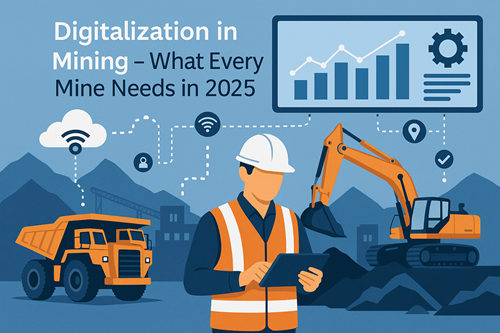Running a small business in 2025 requires more than just passion and great products—it demands smart systems that help streamline operations, reduce errors, and enhance the customer experience. One of the most essential tools in this digital age is the Point-of-Sale (POS) System.
Once seen as just a cash register, today’s POS systems do far more than process sales. From inventory tracking to employee scheduling and customer relationship management, the modern POS is a complete business management tool.
In this guide, we’ll walk through everything you need to know about choosing the Best POS System For Your Small Business in 2025, including important features, benefits, and how to evaluate the right solution for your specific needs.
What Is a POS System?
A POS system is the combination of hardware and software that businesses use to conduct sales. When a customer makes a purchase, the POS system processes the transaction and records it.
However, modern POS systems do much more than just accept payments. They can manage inventory, collect customer data, create sales reports, and even integrate with other business tools like accounting software and eCommerce platforms.
Why a Good POS System Matters for Small Businesses
For small business owners, efficiency and cost-effectiveness are crucial. A well-chosen POS system can help in several ways:
- Streamline transactions: Faster checkouts reduce wait times.
- Track inventory in real time: Know what’s in stock at any moment.
- Analyze sales data: Identify top-selling items and customer behavior.
- Manage employees: Monitor work hours, productivity, and sales performance.
- Enhance customer relationships: Collect contact info, offer loyalty programs, and personalize service.
Whether you’re running a retail store, café, salon, or food truck, the right POS can help reduce manual tasks and improve decision-making.
Types of POS Systems
There are different types of POS systems available today. The best one for your business will depend on your industry, size, and workflow.
- Cloud-Based POS
Cloud POS systems operate online and store data on remote servers. They are accessible from any device with an internet connection.
- Benefits: Automatic updates, remote access, low upfront cost
- Ideal for: Multi-location businesses, mobile operations, or those needing flexibility
- On-Premise POS
These are traditional systems installed on local hardware. Data is stored on-site.
- Benefits: Greater control over data, doesn’t require continuous internet
- Ideal for: Businesses with limited internet access or strict data regulations
- Mobile POS (mPOS)
Designed for tablets or smartphones, POS System are lightweight and portable.
- Benefits: Mobility, affordability
- Ideal for: Pop-up shops, kiosks, and service professionals
- Industry-Specific POS
Many providers offer specialized systems for certain business types:
- Retail POS: Barcode scanning, SKU tracking, promotions, and supplier management
- Restaurant POS: Table management, menu customization, kitchen display systems
- Salon/Service POS: Appointment scheduling, memberships, and tipping options
Key Features to Look For in a POS System
When evaluating POS systems for your business, consider the following must-have features:
Sales Tracking & Reporting
Detailed sales reports help track performance over time, measure growth, and make informed decisions.
Inventory Management
Real-time tracking helps reduce stockouts and overstocking. Look for systems that offer automatic low-stock alerts and multi-location inventory control.
Customer Management
A good POS can save customer information, purchase history, and preferences—enabling better marketing and personalized service.
Employee Management
Features such as clock-in/out, user roles, and individual performance tracking can help improve staff accountability.
Payment Flexibility
Ensure the POS supports multiple payment options: card payments, mobile wallets, contactless payments, and buy-now-pay-later services.
Integration Capability
The ability to connect with accounting, eCommerce, loyalty, or marketing software is essential for smooth operations.
Understanding POS Pricing
POS systems come with both upfront and recurring costs. Understanding these costs helps you choose a solution that fits your budget.
Software Subscription Fees
Most cloud-based systems charge monthly fees that vary by feature tier, typically ranging from $29 to $ 200 or more.
Hardware Costs
Depending on your needs, you may need a touchscreen terminal, a receipt printer, a barcode scanner, or a cash drawer. Mobile setups may only require a tablet and a card reader.
Transaction Fees
If the POS includes payment processing, expect a per-transaction fee (usually 2.6%–2.9% + a fixed amount). Consider how this affects your overall profit margin.
Add-On Features
Some providers charge extra for tools like advanced reporting, loyalty programs, or third-party integrations.
Benefits of Using a POS System in 2025
As business needs evolve, POS systems continue to adapt. Here are some ways they add value in the current landscape:
- Faster service and reduced errors
- Better data security with cloud backups
- Enhanced remote business management
- Real-time insights to help adapt quickly
- Improved customer satisfaction and loyalty
Modern POS platforms are designed to help small business owners compete more effectively in a tech-driven market.
Comparing Popular POS Options (2025 Overview)
Here’s a general overview of some popular POS systems small businesses are exploring in 2025:
|
POS System |
Best For |
Key Features |
Drawbacks |
|
Square POS |
Mobile/retail businesses |
Free plan, mobile-friendly, inventory tools |
Limited advanced features |
|
Shopify POS |
Online retailers with physical stores |
eCommerce sync, omnichannel selling |
Works best with Shopify stores |
|
Toast POS |
Restaurants |
Menu management, kitchen display, delivery support |
Hardware locked |
|
Lightspeed POS |
Retail and hospitality |
Advanced inventory, multi-location support |
Higher learning curve |
|
Clover POS |
General small business |
Customizable hardware, third-party apps |
Tied to specific payment processors |
Note: Always test-drive any system using a free trial or demo to ensure it fits your workflow.
Tips for Choosing the Right POS System
Here are a few practical tips for selecting the best POS system for your business:
- Evaluate your daily operations: List the most repetitive or time-consuming tasks you want the system to simplify.
- Check user reviews and industry forums: See what other small business owners are saying.
- Ask about customer support: 24/7 support and onboarding help can be critical.
- Think long-term: Choose a system that can scale with your business as it grows.
- Consider internet reliability: If your business operates in areas with poor connectivity, offline functionality is important.
Final Thoughts
Choosing the best POS system for a small business in 2025 is about more than comparing software—it’s about aligning technology with your business goals. The right POS solution can help improve productivity, deliver better customer experiences, Cherry Berry RMS, and provide the data you need to make smarter decisions.
Take the time to assess your business’s unique needs, compare features, and explore trial options. With the right tools, your small business can not only operate more efficiently but also grow sustainably in an increasingly competitive market.






